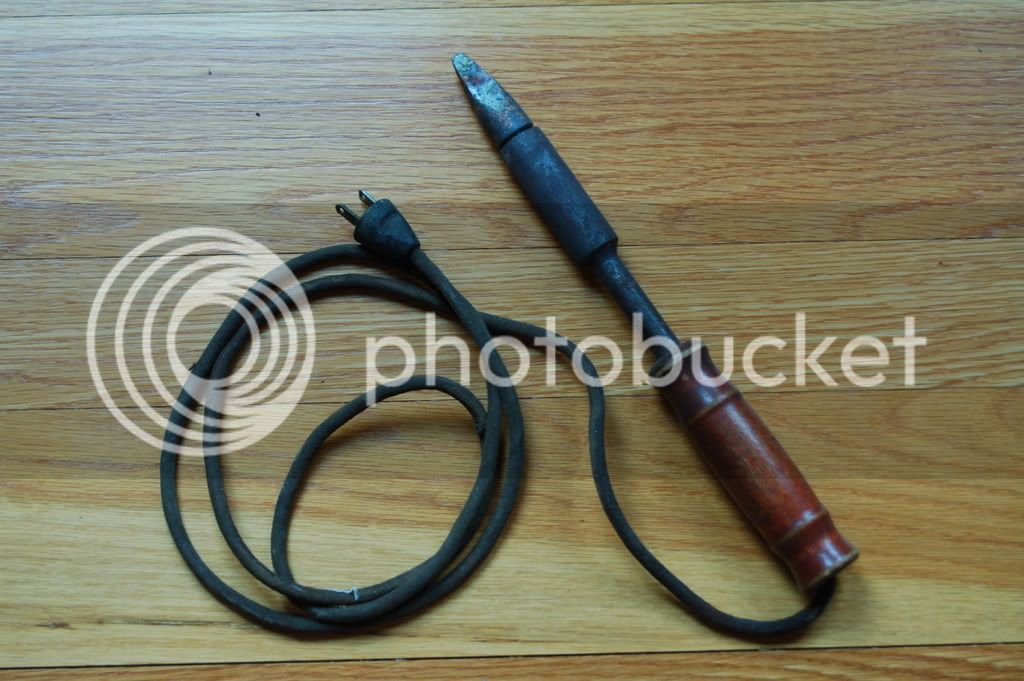motorcycle-ed
Well-known member
Oh well, like an oil thread, you are going to get a LOT of input on this one. I have some experience with soldering and have built two avionics radios, four avionics audio panels, two avionics annunciator panels, a color TV set and countless projects over the years. I have soldered with the best equipment (some of which talked about already) and the WORST equipment including a BIC lighter (an especially lousy choice, but it worked on the road when I HAD to do something). Most of the proper techniques have been pointed out, the most important is to make sure the tip has enough mass (regardless of the "wattage" of the iron) for the parts to be soldered. A small pencil tip works good for small joints on PC boards but is lousy for typical MC wire. Any soldering iron will get "hot" enough, but without enough wattage, the tip will cool too quickly and then stay cold, regardless of how long you hold it on the joint. You can do more with too much mass and wattage than too little but the too-large tip may not fit into the work well. Too much wattage in a non-temp controlled iron will cause it to get much too hot if left alone for a few minutes. The best choice is to buy a professional iron with temperature controlled tip and 100 watts or more. This way, the iron can transfer all the heat required (if the tip surface on the work is large enough), but without overheating. The tip acutally has a bimetallic switch, or a temperature sensor, and the "base" controls the current to maintain the tip temperature. I have an old Weller "gun" type with two tips, a conical tip regulated to 650 degrees and a chisel tip regulated to 750 degrees. Almost all of what I do is with the 650 degree tip.
Regardless of the equipent used, however, it is necessary to get the work (parts) to the right temperature. For most joints, this just can't be done effectively without FIRST applying a bit of solder to the tip of the iron while contacting the parts. The tip is hot, but without some wetted solder at the iron tip/work joint, the heat just will not flow from the tip to the work. You have to maintain this "wetted" surface at the joint to keep the heat going from the tip to the work. Monitor this heating of the joint by touching the solder to the work, near the tip, then when the solder will melt on the work, feed fresh solder until "flow" into the work is verified, then remove the iron and let it cool. DONT MOVE THE ed JOINT. It may still "stick together" but the joint will be crystaline (cold) and is characterized by a flat, granular, grey look rather than the shiny, smooth, silver look. Play with some scrap wires until you get the feel for it.
As almost everyone has said...buy a good iron, once in your life, and the money will be well spent. Also, as some have said...buy GOOD solder, from an electronics store, not from Wal-Mart, where you don't know what you will get...probably floor sweepings.
Ed
Regardless of the equipent used, however, it is necessary to get the work (parts) to the right temperature. For most joints, this just can't be done effectively without FIRST applying a bit of solder to the tip of the iron while contacting the parts. The tip is hot, but without some wetted solder at the iron tip/work joint, the heat just will not flow from the tip to the work. You have to maintain this "wetted" surface at the joint to keep the heat going from the tip to the work. Monitor this heating of the joint by touching the solder to the work, near the tip, then when the solder will melt on the work, feed fresh solder until "flow" into the work is verified, then remove the iron and let it cool. DONT MOVE THE ed JOINT. It may still "stick together" but the joint will be crystaline (cold) and is characterized by a flat, granular, grey look rather than the shiny, smooth, silver look. Play with some scrap wires until you get the feel for it.
As almost everyone has said...buy a good iron, once in your life, and the money will be well spent. Also, as some have said...buy GOOD solder, from an electronics store, not from Wal-Mart, where you don't know what you will get...probably floor sweepings.
Ed























